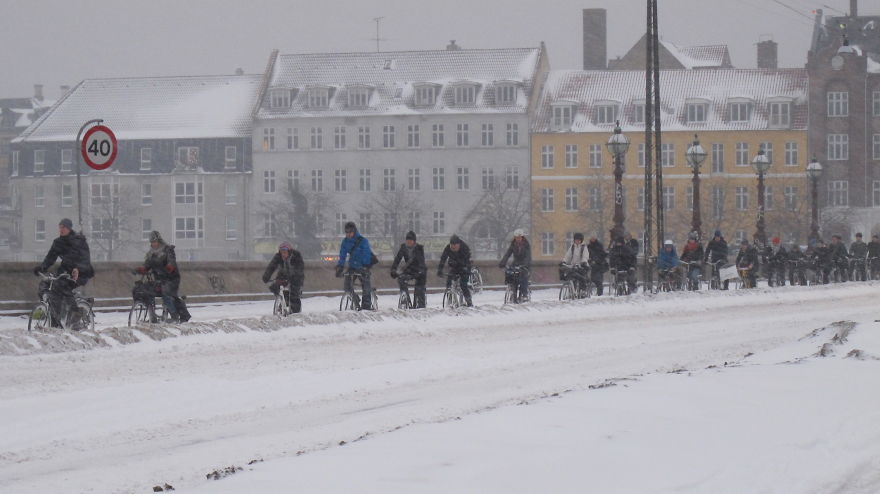On the other hand, though it’s hard to believe now, the sun does come out in winter now and then and when it does, it is usually brilliant and accompanied by cold, clear air that makes the world shine as if it were brand-new. And if there’s snow on the ground, and that snow is still white, taking a bike ride becomes a uniquely beautiful adventure.
And a tricky one, of course. Because it’s cold and there may be snow on the path or the pavement is wet and may even have frozen spots. So, if you’re going to do it, here are a few tips on how to ensure a safe and comfortable journey.

Clothing
First of all, dress warm and in layers. Buy warm and waterproof clothes that are specific to cycling because they have been designed for a cyclist’s body positions and movement while on a bike. Good-quality windproof gloves and overshoes are essential because the hands and feet are what gets cold first. Bring along an extra layer or two, just in case the weather changes for the worse, and a backpack so you can remove some layers if it turns warmer. In any case, you should be a little cold when you get on the bike because cycling will warm you up. If you’re not, you’re overdressed.
The bike
Try not to use your ‘good’ bike for a winter ride. Winter cycling can hard on the bike. If you’ve got an old mountain bike stored away, bring it out and fix it up. Or you might just use this as an excuse to buy that fat bike you’ve always wanted – although 6-cm tires are not necessary to have a great time in the snow. Bicycling.com suggests running on the lowest tire pressure you can without risking a pinch flat. Depending on how much you weigh, you could ride as low as 15 psi – but try it first in the fall when changing a flat is not as daunting as in winter. And, if you don’t mind the expense, invest in studded tires to give you more traction in icy conditions. Remember to wash the bike after every ride – all that dirt and salt the wheels kick up can corrode the metal. Then apply a thick lubricant (such as NixFrixShun) to keep everything running smoothly on your next winter ride.

The tires
Punctures occur most frequently in wet conditions – and snow can hide broken glass and other tire-hostile objects. So bring along extra tubes and a working pump. And if you’re riding in a group, make sure you have enough of each to cover multiple emergencies.
Food & drink
Energy bars, coffee or tea, and lots of water. Store your warm drinks in double-insulated thermos bottles to keep them warm and keep your water bottle on your body to keep it from freezing.

Other stuff
Lights, because it can get dark quickly or a sudden snow shower may spring up – and you always want to be very visible to drivers. Always keep a small, rechargeable bike light on your handlebar and invest in a very bright and pulsing taillight. Fenders, to keep the slushy street mess off yourself and your fellow riders. And, finally, sunscreen because the snow reflects UV radiation – as any sun-burned skier can tell you. The cream also helps to hydrate your exposed skin. Applying lip balm would also be a good idea.
Black ice
No, don’t bring any – there’ll be enough en route for you to deal with. It’s hard to see and difficult to navigate on a bike. So, when you ride, try to avoid areas where water may have accumulated and froze, such as gutters, under bridges and around drains. And avoid metal on the road, such as tracks or manhole covers, because they can be covered in a thin, invisible and a very slick layer of ice.
Now, get out there and have a good ride!




